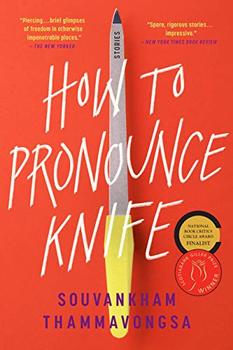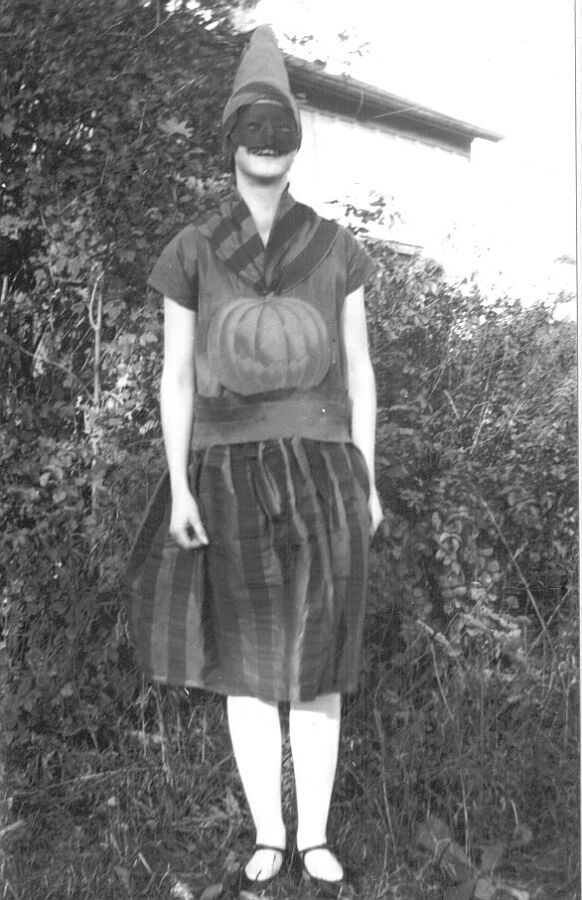Summary | Excerpt | Reading Guide | Reviews | Beyond the Book | Read-Alikes | Genres & Themes | Author Bio

This article relates to How to Pronounce Knife
 In the story "Chick-A-Chee!" from How to Pronounce Knife by Souvankham Thammavongsa, an immigrant father takes his children trick-or-treating on Halloween in the hope that they will integrate better into the local culture.
In the story "Chick-A-Chee!" from How to Pronounce Knife by Souvankham Thammavongsa, an immigrant father takes his children trick-or-treating on Halloween in the hope that they will integrate better into the local culture.
Around the world today, treat-or-treating is very much seen as an all-American activity. However, its origins can be traced back to the ancient Celtic holiday of Samhain (pronounced SOW'inn), which is still celebrated by modern pagans. During this end-of-summer festival, the ancient Celts believed that the barrier between the world of the gods and humankind was lifted and that deities played tricks on humans.
In the 8th century CE, Christians began to celebrate All Saints' Day, a day to honor saints and martyrs, on November 1st. This celebration, which became combined with some Samhain traditions, was known as Hallowmas, and the evening before as All Hallows' Eve (which would become "Halloween"). One Hallowmas tradition was for poor folk to go knocking from door to door begging for food. They would return the generosity of obliging families by promising to pray for their dead. The wearing of costumes along with this tradition, or "guising," appeared in Scotland as early as the 16th century.
It is believed that Irish and Scottish immigrant families established Halloween traditions in North America around the mid-19th century, gathering for home parties on Halloween night centered on children's activities such as apple bobbing and various types of pranks. The first known reference to an activity akin to trick-or-treating occurred in a 1911 Ontario newspaper that reported children on Halloween singing songs and rhymes to neighbors and being rewarded with nuts and candies. Popular etymologist Barry Popik found an early reference to the actual term "trick-or-treat" in a 1923 article in The Leader-Post reporting from Regina, Saskatchewan: "Hallowe'en passed off very quietly here. 'Treats' not 'tricks' were the order of the evening."
A few years later, the now-common Halloween catchphrase was beginning to pop up with more frequency in the United States and Canada. In 1927, the Calgary Daily Herald mentioned "the very young, who wandered in droves from door to door, heavily disguised and demanding 'trick or treat'" and the Lethbridge Herald reported, "The youthful tormentors were at back door and front demanding edible plunder by the word 'trick or treat.'" By the '40s and '50s, Halloween had become a widespread holiday across North America, and trick-or-treating was prominently featured in issues of children's magazines such as Jack and Jill and Children's Activities, comic strips such as the ever-popular Peanuts and on network radio programs such as The Baby Snooks Show, The Jack Benny Show and The Adventures of Ozzie and Harriet. A Walt Disney cartoon titled Trick or Treat also helped cement the trappings of Halloween in the minds of American children. In this 1952 film, Donald Duck's nephews Huey, Dewey and Louie go trick-or-treating dressed as a ghost, a devil and a wizard and encounter a witch, a talking jack-o'-lantern and singing ghouls.
Throughout the '60s, '70s and '80s, Halloween became more established in American pop culture, which led to more people knowing about the holiday outside of Canada and the U.S. This happened in part thanks to Hollywood movies such as John Carpenter's seminal 1978 slasher film Halloween and Steven Spielberg's 1982 sci-fi favorite E.T. the Extra-Terrestrial, which features a memorable scene where Elliott dresses his alien friend up as a ghost to sneak him out of the house to go trick-or-treating.
Girl in a Halloween costume in Waterdown, Ontario in 1928
Filed under Cultural Curiosities
![]() This "beyond the book article" relates to How to Pronounce Knife. It originally ran in May 2020 and has been updated for the
April 2021 paperback edition.
Go to magazine.
This "beyond the book article" relates to How to Pronounce Knife. It originally ran in May 2020 and has been updated for the
April 2021 paperback edition.
Go to magazine.






Your guide toexceptional books
BookBrowse seeks out and recommends the best in contemporary fiction and nonfiction—books that not only engage and entertain but also deepen our understanding of ourselves and the world around us.